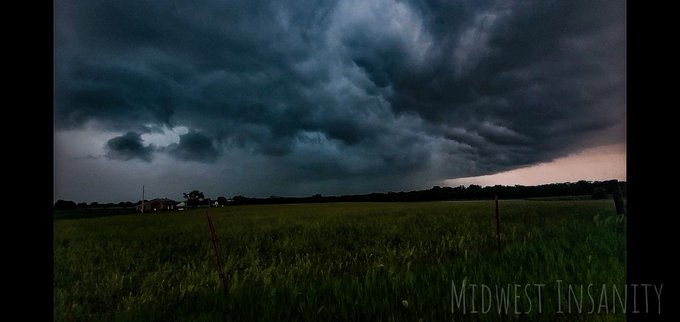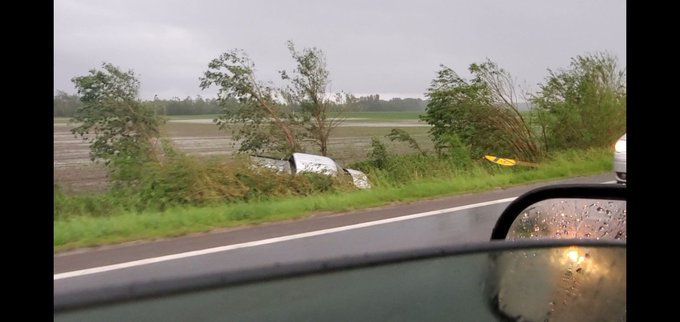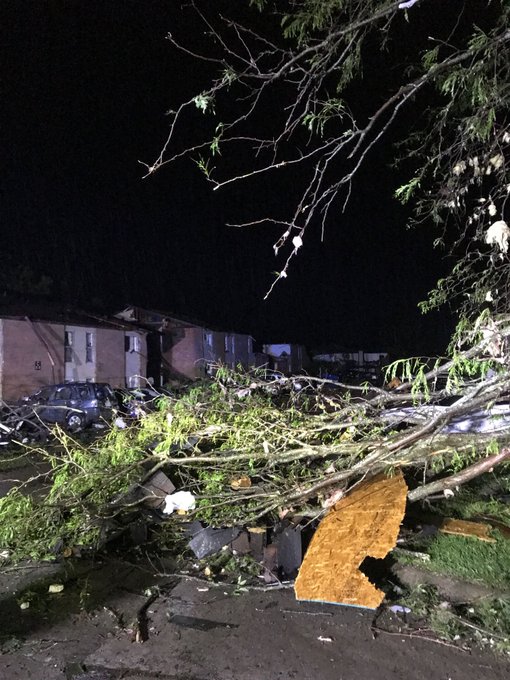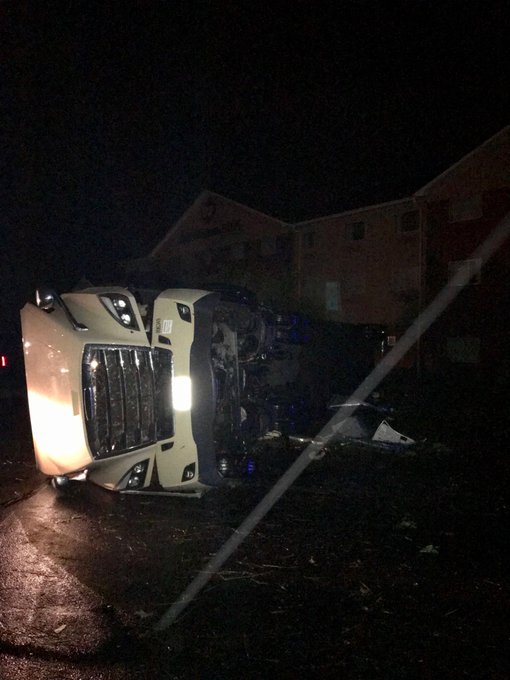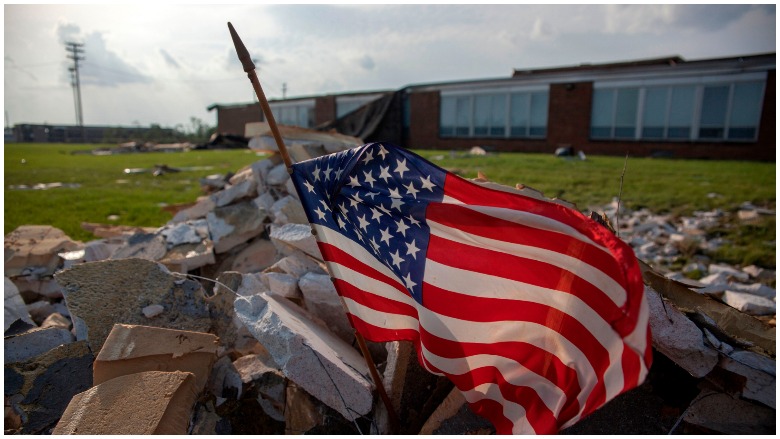
Getty Why are there so many tornadoes right now? That's a complex question.
Why are there so many tornadoes right now? That’s what a lot of people are wondering after a series of twisters caused devastation in late May 2019 throughout the United States from Ohio to Kansas to Oklahoma.
Tornadoes even threatened New York City, New Jersey, and Pennsylvania on May 28, 2019. What the heck is going on? For 12 days straight, especially, tornadoes have wreaked havoc in communities across multiple states. According to The New York Times, there were more than 500 preliminary reports of tornadoes over 30 days. The Times reported that such numbers, if the twisters are verified, would be rare.
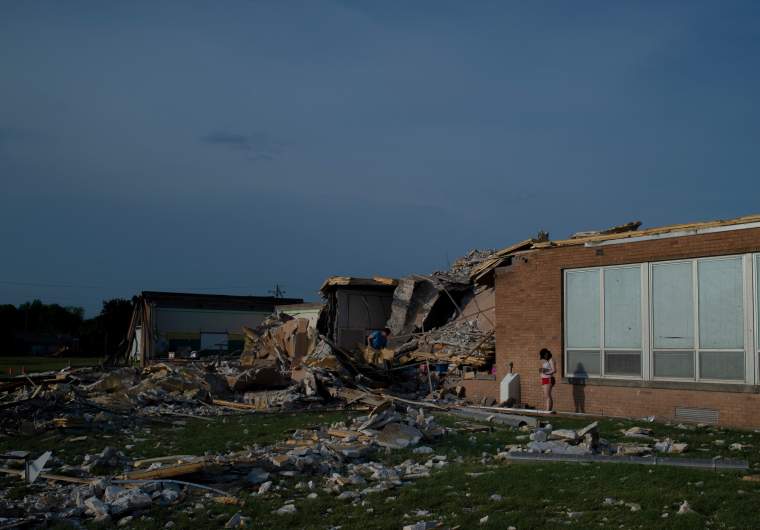
A north Dayton elementary school lay in rubble after being destroyed by a powerful tornado early in the morning on May 28, 2019 in Dayton, Ohio.
The Associated Press reported that 55 tornadoes were reported on Monday alone (May 27, 2019) throughout eight states. AP called the tornadoes “unusually high” activity.
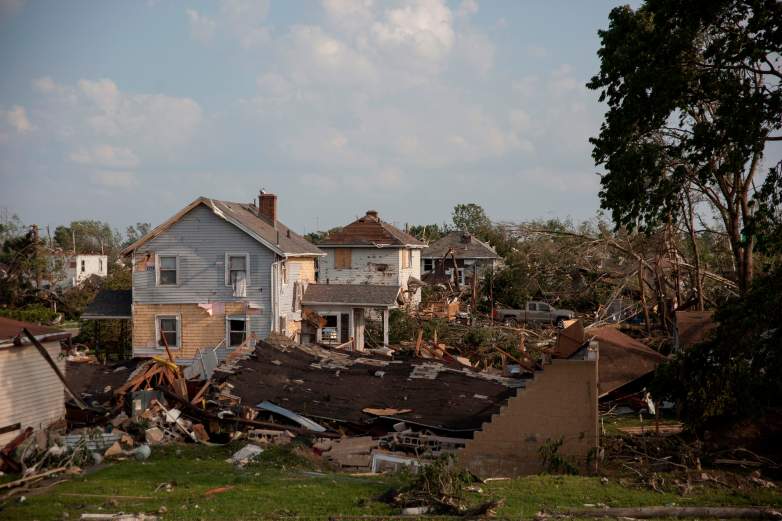
Houses damaged by a tornado are seen in Dayton, Ohio on May 28, 2019, after powerful tornadoes ripped through the US state overnight, causing at least one fatality and widespread damage and power outages.
According to the Times, the twisters are the result of “a high-pressure area that pulled the Gulf of Mexico’s warm, moist air into the central United States,” combining it with a “trough trapped over the Rockies, which included strong winds.” Fox News similarly described the weather system spawning the May 2019 tornadoes as “a volatile mix of warm, moist air from the Southeast and persistent cold from the Rockies clashed and stalled over the Midwest.” According to Fox, the National Weather Service has had 934 tornado reports so far in 2019, and that’s up over the year before, although some might be of the same twister (just observed by more than one person.) Fox puts the 2019 death toll at 38 people through May 28, 2019.
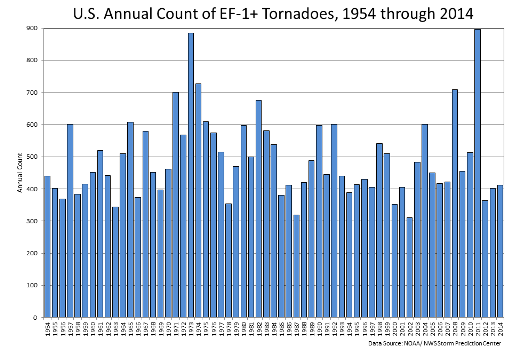
If you think there are a lot of twisters lately, you’d be right, at least in the short term. However, the historical analysis is more complex and charts since the 1950s do not show a steady increase in tornadoes (see a federal government chart tracking tornadoes above). The number of tornadoes recently ties a record, though; “11 consecutive days with at least eight tornadoes on each of those days” was a phenomenon not seen since 1980, according to a federal expert, Patrick Marsh, interviewed by Fox. Since 2012, however, the number of tornadoes had dipped or remained static, although it’s unclear why, the network reported. Marsh told Fox the current weather system is unusually “entrenched,” which is sparking some of the issues.
The National Centers for Environmental Information reports that an average of 1,253 tornadoes occurred in the United States each year from 1991 to 2010. “Because a tornado is part of a severe convective storm, and these storms occur all over the Earth, tornadoes are not limited to any specific geographic location,” the agency explained.
You can look up tornado statistics by month and year here. You can access NOAA’s meta data on tornadoes here.
Here’s what you need to know:
Historical Records Make It Tough to Say Tornadoes Are Increasing in the United States

A man gathers his belongings from his damaged home in Trotwood, Ohio, on May 28, 2019, after powerful tornadoes ripped through the US state overnight.
Is climate change causing tornadoes to increase? Even the Times reported that’s unclear, citing “limited historical information” into “whether rising temperatures are making tornadoes more common and severe.”
NOAA explains that tornadoes must be observed, unlike rainfall, which can be measured with a “fixed instrument.” It’s possible that many tornadoes were not counted in the past when populations were less, the government agency reported, adding, “This disparity between tornado records of the past and current records contributes a great deal of uncertainty regarding questions about the long-term behavior or patterns of tornado occurrence.”

“Improved tornado observation practices have led to an increase in the number of reported weaker tornadoes, and in recent years EF-0 tornadoes have become more prevalant in the total number of reported tornadoes,” the agency continued. “In addition, even today many smaller tornadoes still may go undocumented in places with low populations or inconsistent communication facilities.”
Noted NOAA: “In fact, wherever the atmospheric conditions are exactly right, the occurrence of a tornadic storm is possible.”
The United States Has the Most Tornadoes in the World Because of the Rocky Mountains & Gulf of Mexico

A north Dayton elementary school lay in rubble after being destroyed by a powerful tornado early in the morning on May 28, 2019 in Dayton, Ohio.
How do tornadoes form? “Globally, the middle latitudes, between about 30° and 50° North or South, provide the most favorable environment for tornadogenesis. This is the region where cold, polar air meets against warmer, subtropical air, often generating convective precipitation along the collision boundaries,” the agency explains. The United States has by far the most tornadoes in the world, according to the agency.
Tornadoes require these conditions to form, according to The Atlantic: “Warm, moist air at low levels,” and “cool, dry air aloft,” and “horizontal winds that increase with height from the ground-up—and change direction.” The Rocky Mountains and Gulf of Mexico are why the United States leads the world in tornadoes because they help create the required conditions, the magazine reported.
What is a tornado, specifically? “A tornado is a narrow, violently rotating column of air that extends from the base of a thunderstorm to the ground,” explains the National Severe Storms Laboratory. “Because wind is invisible, it is hard to see a tornado unless it forms a condensation funnel made up of water droplets, dust and debris. Tornadoes are the most violent of all atmospheric storms.”
You Have to Go Back to the 1920s to Find History’s Deadliest Tornado in the United States
The deadliest tornado in U.S. history was in 1925, according to the government. The tornado struck Indiana, Missouri, and Illinois and killed 695 people. The only recent tornado to make that list occurred in Joplin, Missouri in 2011 and killed 158 people.
April 2019 was also a heavy month for tornadoes. “According to data from NOAA’s Storm Prediction Center, during April, there were 299 preliminary tornado reports. This is well above, nearly double, the 1991-2010 average of 155 tornadoes for the month of April,” the agency wrote.
A 2018 study called Spatial trends in United States tornado frequency found that “national annual frequencies of tornado reports have remained relatively constant, but significant spatially-varying temporal trends in tornado frequency have occurred since 1979.” Another 2018 research article, titled Tornado seasonality in the southeastern United States, found that “it is difficult to ascertain if the frequency of tornadoes in the U.S. is increasing because our ability to observe and report tornado occurrence has increased over time.”
Most tornadoes that form in the United States are weak, and they are most common in the area of the southern plains in the central United States called “tornado alley” and in Florida.
“Florida has numerous tornadoes simply due to the high frequency of almost daily thunderstorms. In addition, several tropical storms or hurricanes often impact the Florida peninsula each year. When these tropical systems move ashore, the embedded convective storms in the rain bands often produce tornadoes,” explains NOAA.
A 2016 study called Observed and Projected Changes in United States Tornado Exposure found that “while the findings presented reveal the potential for more and greater tornado disasters in the future, disaster risk probability is not uniform across space and time. In general, comparative results across at-risk regions reveal that future tornado disaster potential will be greatest in the midsouth because of this region’s elevated tornado risk intersecting heightened exposure rates because of existing and projected built-environment development in and around metropolitan areas. The south contains a large number of physical and social vulnerabilities—from a high rate of nighttime tornadoes and fast storm speeds to substantial mobile home density and elevated poverty rates.”
“The overall weather pattern that has been in place across the U.S. will continue early this week, which will bring more rounds of severe weather to the Plains,” AccuWeather Meteorologist Brett Rathbun told that site on May 28.
You can see a storm prediction map from the National Weather Service here. Tornado HQ tracks all tornado threats in the United States. There were 20 warnings in a four-hour period of May 28, 2019.
Here are some of the communities that suffered severe tornado damage in late May 2019:
Linwood & Lawrence, Kansas
A large tornado struck the Kansas communities of Linwood and Lawrence on May 28, 2019, briefly imperiling Kansas City. Storm debris caused the airport to temporarily close down so it wouldn’t damage airplanes.
The mayor told CNN that dozens of homes were “all gone,” although there were no fatalities. The Kansas City Star reported that 11 people were injured in Douglas County, home to Lawrence.
Dayton, Ohio
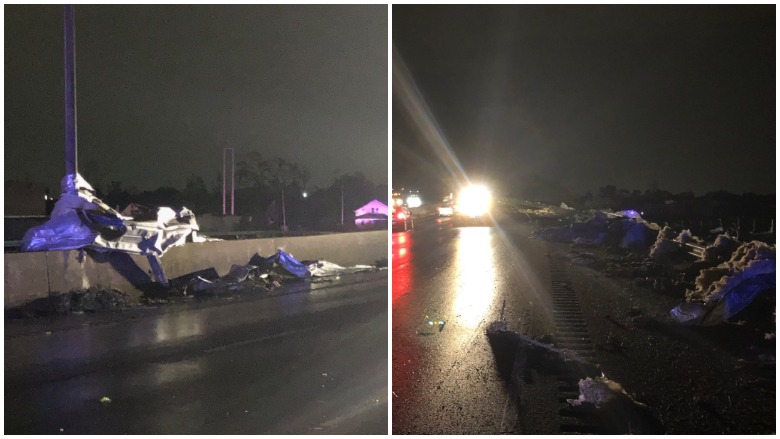
Ohio Department of TransportationDayton tornado damage and debris.
Dayton, Ohio, and surrounding communities suffered extreme devastation as a series of tornadoes struck the state on May 27, 2019. More than two dozen people were injured, many homes and businesses were damaged, and an elderly man was killed, according to The Associated Press.
El Reno, Oklahoma
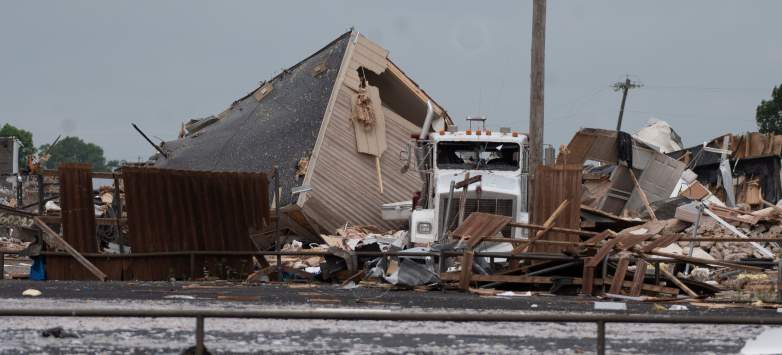
A semi truck sits among the rubble after a tornado struck the American Budget Value Inn May 26, 2019 in El Reno, Oklahoma. At least two people were killed in this Oklahoma City suburb after a tornado barreled through, destroying much of the motel, a trailer park and a car dealership last night, according to published reports.
A mobile home park and the second-roof of a hotel were destroyed by a tornado that struck El Reno, Oklahoma. At least two people were killed.
Jefferson City, Missouri
Jefferson City, Missouri suffered severe structural damage when a tornado struck. A violent Jefferson City tornado trapped people, ripped roofs off buildings, spurred multiple rescues, and caused major devastation throughout the Missouri community. There were multiple injury reports. At least three people died.
